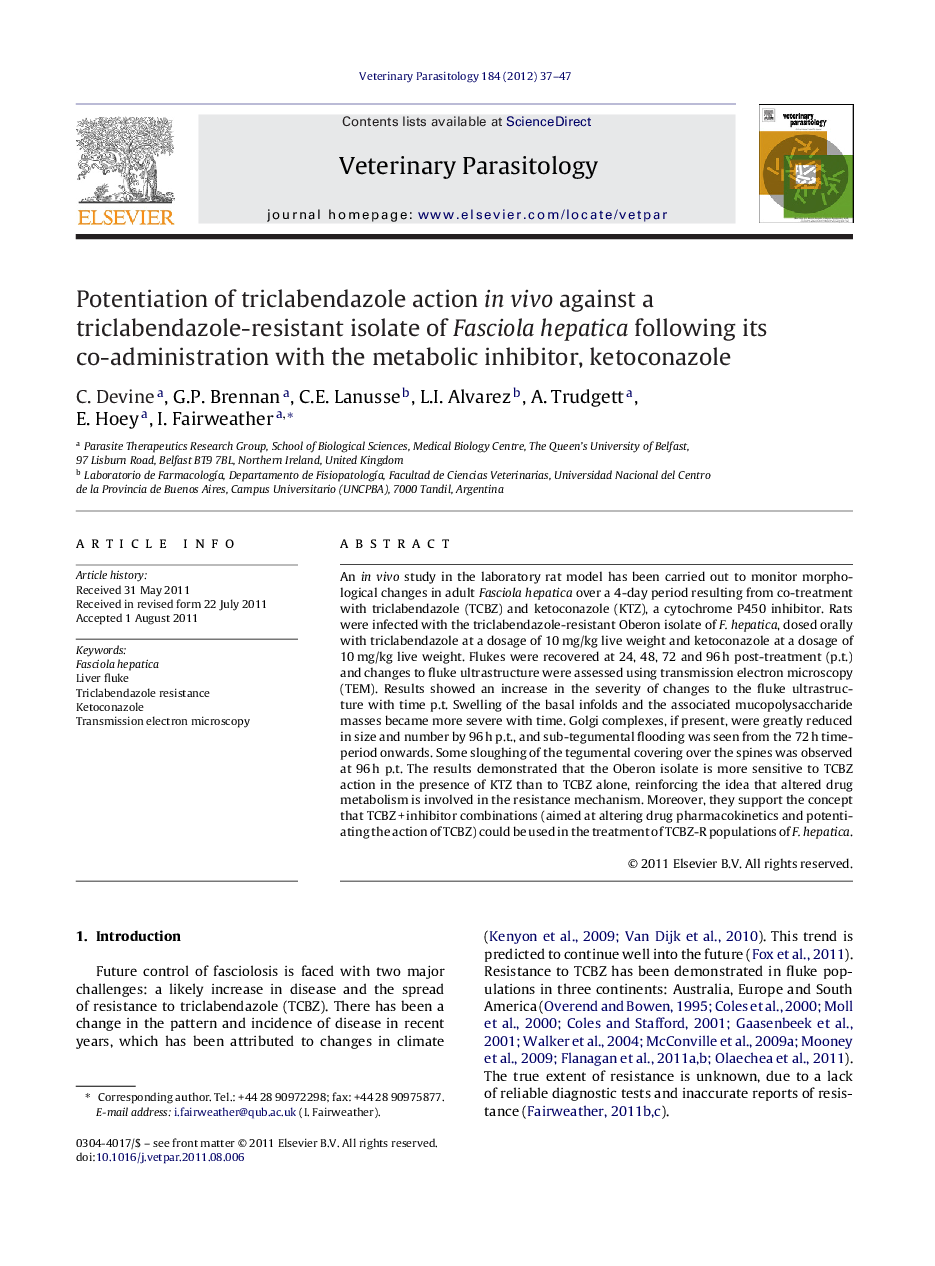| Article ID | Journal | Published Year | Pages | File Type |
|---|---|---|---|---|
| 5805094 | Veterinary Parasitology | 2012 | 11 Pages |
An in vivo study in the laboratory rat model has been carried out to monitor morphological changes in adult Fasciola hepatica over a 4-day period resulting from co-treatment with triclabendazole (TCBZ) and ketoconazole (KTZ), a cytochrome P450 inhibitor. Rats were infected with the triclabendazole-resistant Oberon isolate of F. hepatica, dosed orally with triclabendazole at a dosage of 10Â mg/kg live weight and ketoconazole at a dosage of 10Â mg/kg live weight. Flukes were recovered at 24, 48, 72 and 96Â h post-treatment (p.t.) and changes to fluke ultrastructure were assessed using transmission electron microscopy (TEM). Results showed an increase in the severity of changes to the fluke ultrastructure with time p.t. Swelling of the basal infolds and the associated mucopolysaccharide masses became more severe with time. Golgi complexes, if present, were greatly reduced in size and number by 96Â h p.t., and sub-tegumental flooding was seen from the 72Â h time-period onwards. Some sloughing of the tegumental covering over the spines was observed at 96Â h p.t. The results demonstrated that the Oberon isolate is more sensitive to TCBZ action in the presence of KTZ than to TCBZ alone, reinforcing the idea that altered drug metabolism is involved in the resistance mechanism. Moreover, they support the concept that TCBZÂ +Â inhibitor combinations (aimed at altering drug pharmacokinetics and potentiating the action of TCBZ) could be used in the treatment of TCBZ-R populations of F. hepatica.
